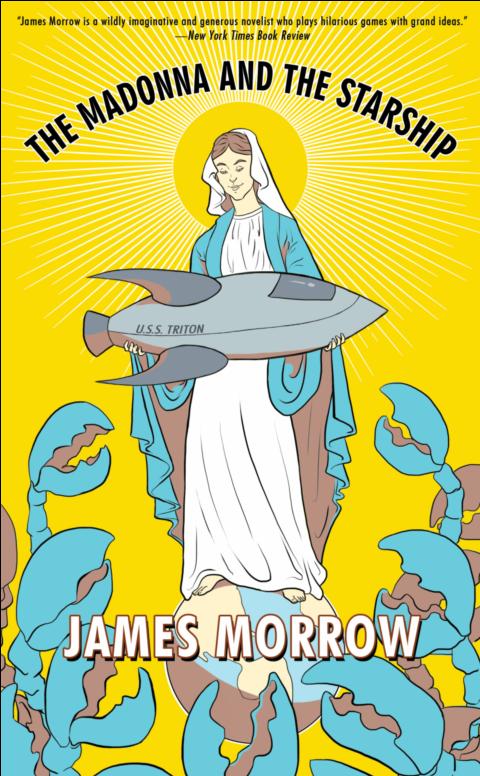 [Added 02/05/2017: Expect to see this novella on many awards' short lists come 2018....]
[Added 02/05/2017: Expect to see this novella on many awards' short lists come 2018....]I have been quite fortunate to have worked on not just one, not two, but three novellas by James Morrow that have been -- or will be -- published by Tachyon Publications. The first of these, Shambling Towards Hiroshima
The second, The Madonna and the Starship , published in 2014, was the focus of my blog post of November 24, 2013, in which I wrote of my work on this novella.
, published in 2014, was the focus of my blog post of November 24, 2013, in which I wrote of my work on this novella.
In that blog post I stated (and I quote): "James Morrow is an absolute master of the sardonic..." -- and with The Asylum of Dr. Caligari , his third novella from Tachyon, due to be published in June, James Morrow does not disappoint.
, his third novella from Tachyon, due to be published in June, James Morrow does not disappoint.
In that blog post I stated (and I quote): "James Morrow is an absolute master of the sardonic..." -- and with The Asylum of Dr. Caligari
Here is the ad copy for the book:
The infamous Dr. Caligari: psychiatrist or psychopath? In this wry and satiric tour de force, award-winning author James Morrow offers a surprising and provocative take on a silent film classic.In the summer of 1914, the world teeters on the brink of the Great War. An American painter, Francis Wyndham, is hired to provide art therapy at a renowned European asylum, working under the auspices of its mysterious director, Alessandro Caligari. Francis is soon beguiled by his most talented student, Ilona Wessels, whose genius with a brush is matched only by the erotic intensity of her madness.Deep in his secret studio, Dr. Caligari, rumored to be a sorcerer, struggles to create Ecstatic Wisdom, an immense painting so hypnotic it can incite entire regiments to rush headlong into battle. Once Francis and Ilona grasp Caligari's scheme in all its supernatural audacity, they conspire to defeat him with a magical work of their own....
The story is all about a painting -- Ecstatic Wisdom (well, actually two paintings, but you'll have to read the story to learn about the other) -- and its effect on the viewer, or viewers, as they came in regimental numbers to view the painting(s).
Here's a brief excerpt from the story itself: Francis Wyndham is clandestinely observing Dr. Caligari at work on his painting:
Watching Caligari suffuse his canvas with whatever species of wizardry or variety of delusion possessed him, I decided his methods represented neither imagination abandoned by intellect, nor revelation tempered by logic, but a third phenomenon. He had beguiled both forces into a condition of mutual betrayal, reason convincing fantasy that violent monsters were desirable, fantasy coercing reason into abandoning its tedious allegiance to facts."Effundam spiritum meum in vobis, virtutibus! Perfectus es!"Now he began spinning in circles—like a deranged dancer, or a whirling dervish, or a man inhabited by devils....
The Asylum of Dr. Caligari will be published in June and is now available for preorder directly from the publisher, Tachyon Publications, or from Amazon.com , or your friendly neighborhood bookseller.
, or your friendly neighborhood bookseller.

